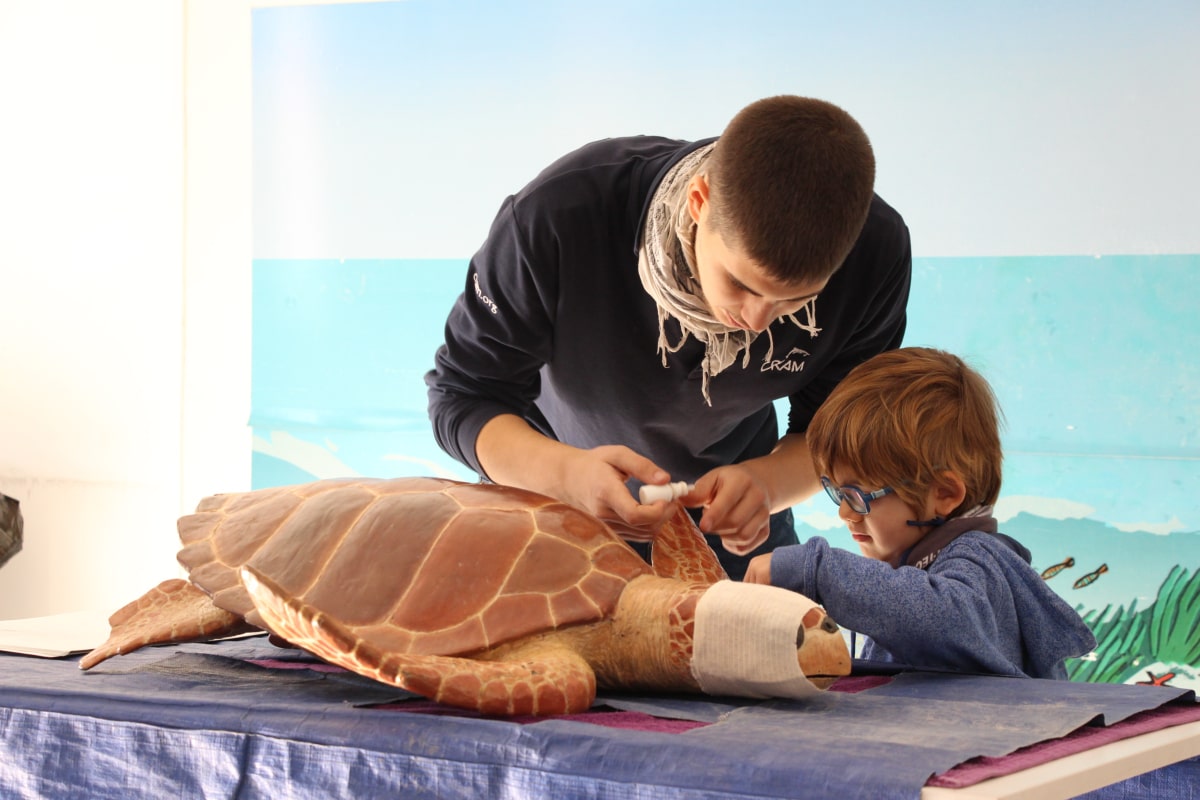Just inside the natural park of the Llobregat Delta and a few kilometers from Barcelona there is an ideal setting. This is the CRAM (Center for the Recovery of Marine Animals), which to the south borders the city’s beaches and the vicinity of Barcelona’s airport.
This visit is ideal for children and families. All learning, rescue and outreach activities at the Center are geared towards the rescue and care of Mediterranean dolphins, turtles and sharks.
The CRAM
Located less than half an hour from the center of Barcelona, it is considered one of the most important centers of its kind in Europe.
The Center occupies 18,000 square meters and operates as a private, non-profit foundation. It all started with the idea of a group of volunteers who were sensitized to save hundreds of dolphins attacked by a lethal viral epidemic in 1991.
These volunteers offered themselves to the Generalitat to work and save marine animals in vulnerable situations. Thanks to this, the CRAM Foundation was born in 1994, completing 25 years of work.
During these years, teams from the Center have assisted more than 400 whales and dolphins that have washed up on the beach. They have also recovered and released more than 600 sea turtles.
Guided tours at CRAM
It never closes and on weekends it offers its visitors different programs (seven proposals for families) that alternate periodically.
But if you want to attend the guided tours on weekends you must make reservations in advance. These visits for groups of adults and children take place from 10:00 a.m. to 12:00 p.m. and begin with the reception of an educator in the pedagogical building.
You can also find an exhibition on biodiversity on the first floor of the building. The objective of the exhibition is to teach visitors about the importance of protecting the sea by not throwing cleaning wipes and plastics on the beach. These residues can kill animals that swallow them.
Another objective of the visit is to raise awareness of the black legend of sharks and their real history. The guides comment that for 2018 only five surfers died from shark attacks in the world, in contrast to the death of thousands of sharks at human hands.
They point out that these animals resemble dolphins and prefer them as food, much more than a surfer. The excuse for their death is their prized fins, catalogued as a delicacy or a unique cosmetic ingredient.
The fishermen catch the shark and cut off its fins while it is still alive and then return it to the sea, leaving it defenseless and surely dead in a short time.

